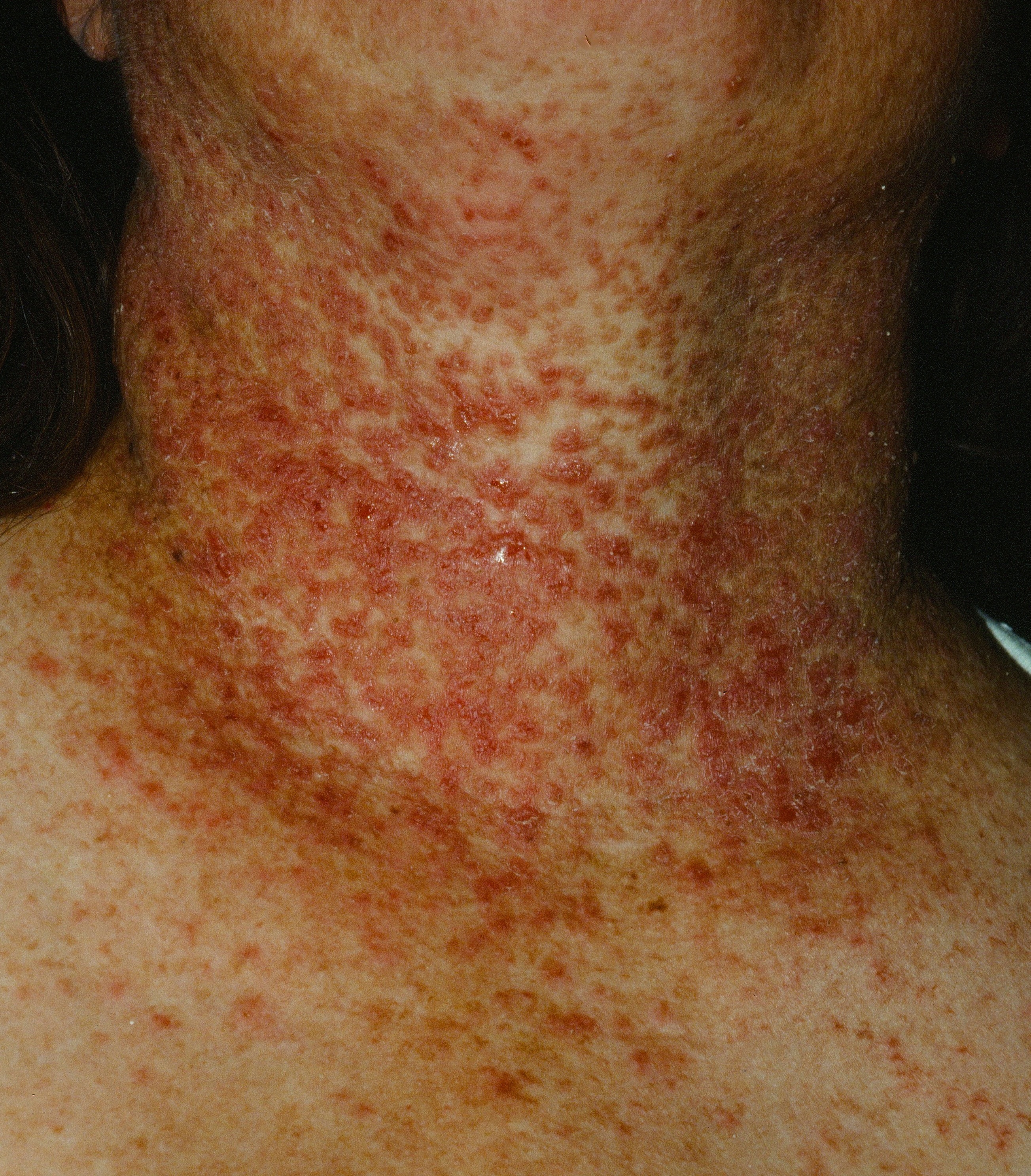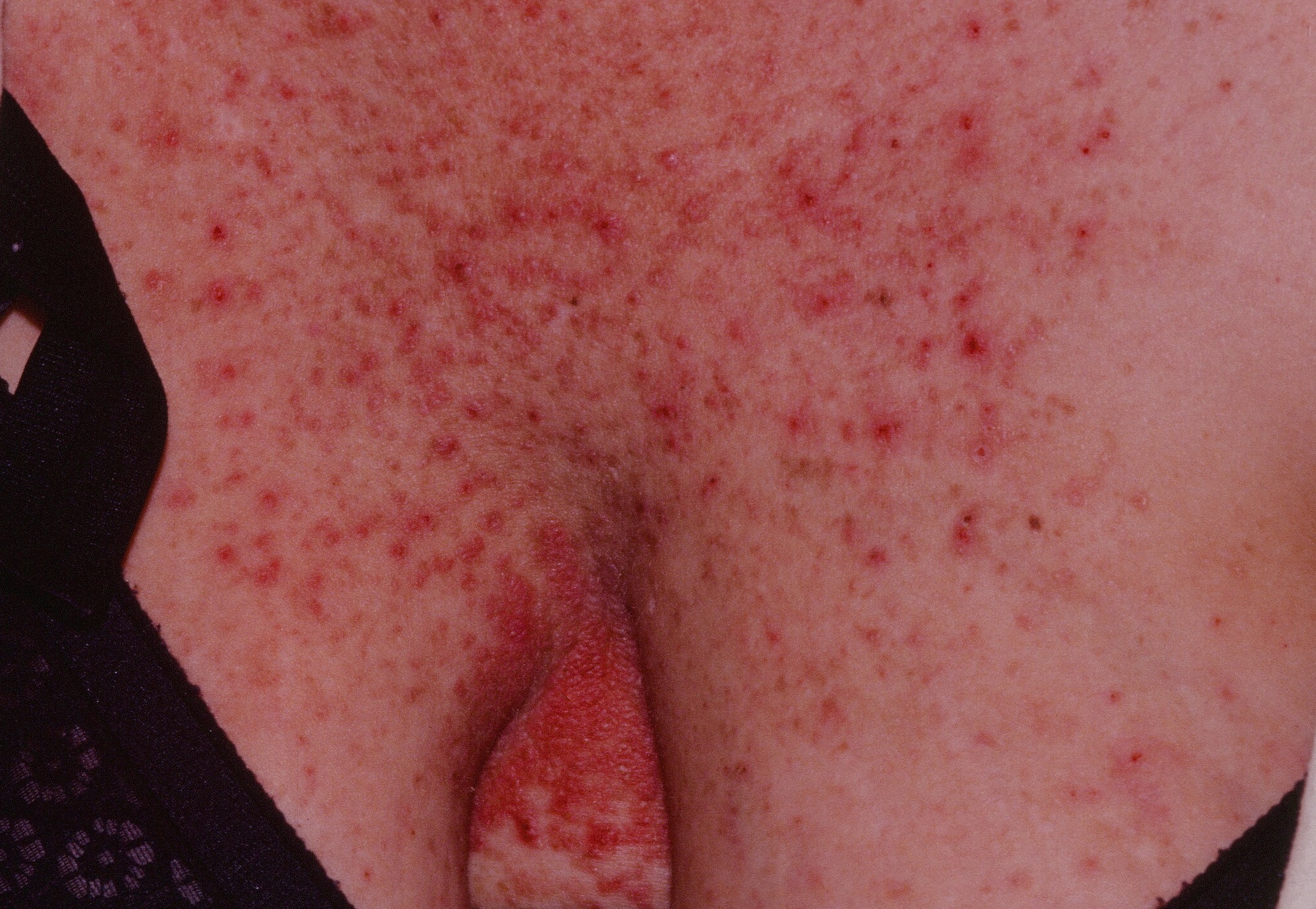
DARIER DISEASE (aka KERATOSIS FOLLICULARIS)
Darier disease (DD), also known as keratosis follicularis, is a rare autosomal dominant genodermatosis characterized by keratotic, verrucous and greasy papules in the seborrheic areas.
- Onset is usually in teenage or young adult years.
- The causative gene codifies ATP2A2, which encodes a sarcoplasmic/endoplasmic reticulum calcium-ATPase, SERCA2, involved in epidermal differentiation and intercellular communication.
- Individuals with Darier disease have a sixfold increased risk of being diagnosed with intellectual disability
- Individuals with DD have an elevated risk of being diagnosed with type 1 Diabetes (risk ratio, 1.74), but not type 2 diabetes.
Clinical
Onset is usually in teenage or young adult years. The patient presents with scaly, waxy, greasy papules in the seborrheic areas. It very commonly involves the chest but may occur anywhere. Heat, sunlight and sweating often aggravate the condition.
Nearly 50% of patients with DD develop skin-colored flat-topped papules that are clinically and histologically indistinguishable from acrokeratosis verruciformis of Hopf, an allelic disorder of DD caused by variants in the ATP2A2 gene.
Patients are at high risk for secondary infection, e.g. bacteria, yeast. Rarely, herpes simplex infection may supervene--so called Kaposi varicelliform eruption.
Mosaic Darier Disease
Mosaic form of Darier disease is a rare subtype of Darier disease and is also described as segmental, zosteriform, linear, or localized. It presents later in life (eg, in the fourth or fifth decade) and lacks other classic features


RegionalDerm
Homepage | Who is Dr. White? | Privacy Policy | FAQs | Use of Images | Contact Dr. White
It is not the intention of RegionalDerm.com to provide specific medical advice, diagnosis or treatment. RegionalDerm.com only intends to provide users with information regarding various medical conditions for educational purposes and will not provide specific medical advice. Information on RegionalDerm.com is not intended as a substitute for seeking medical treatment and you should always seek the advice of a qualified healthcare provider for diagnosis and for answers to your individual questions. Information contained on RegionalDerm.com should never cause you to disregard professional medical advice or delay seeking treatment. If you live in the United States and believe you are having a medical emergency call 911 immediately.
